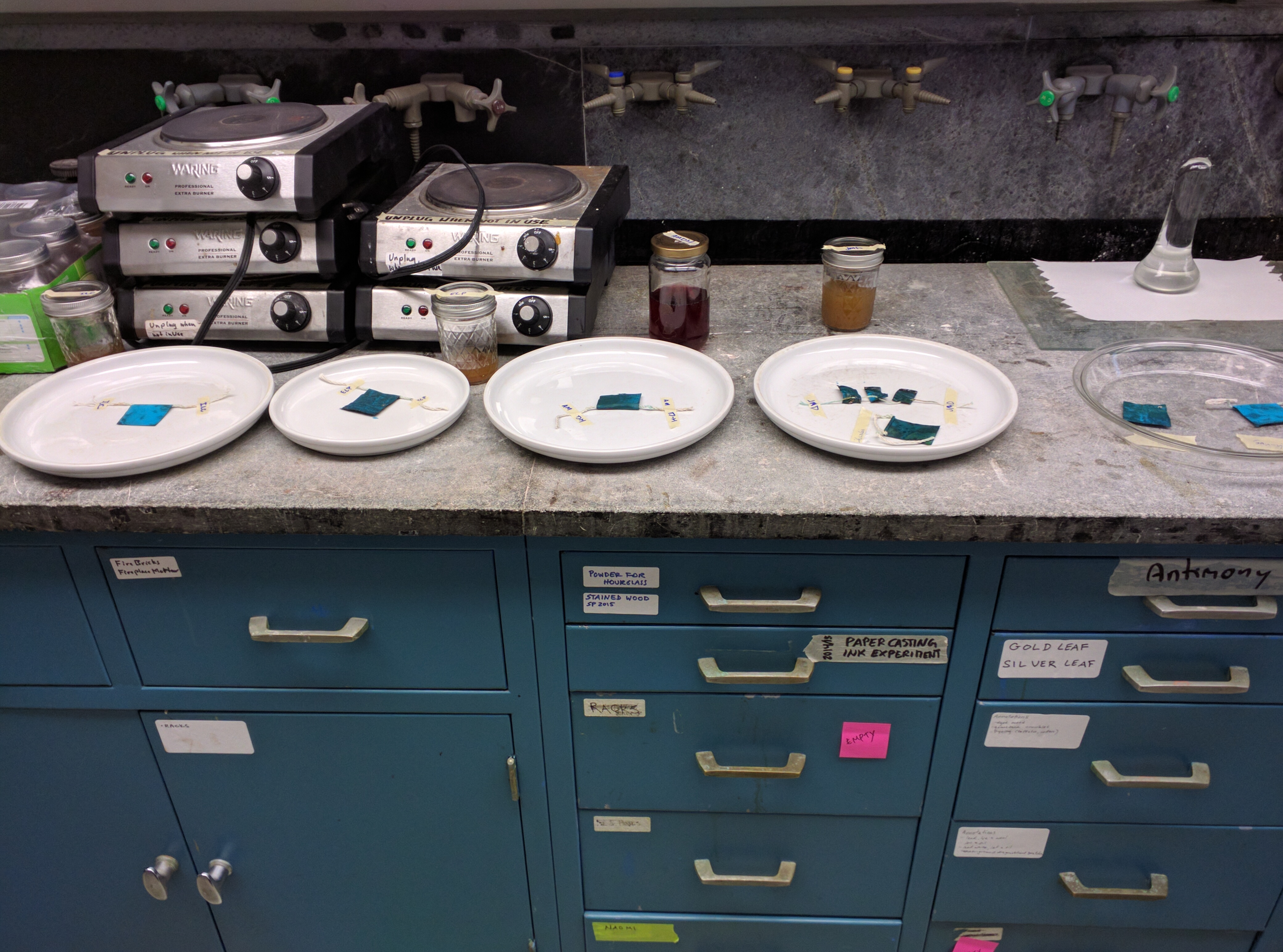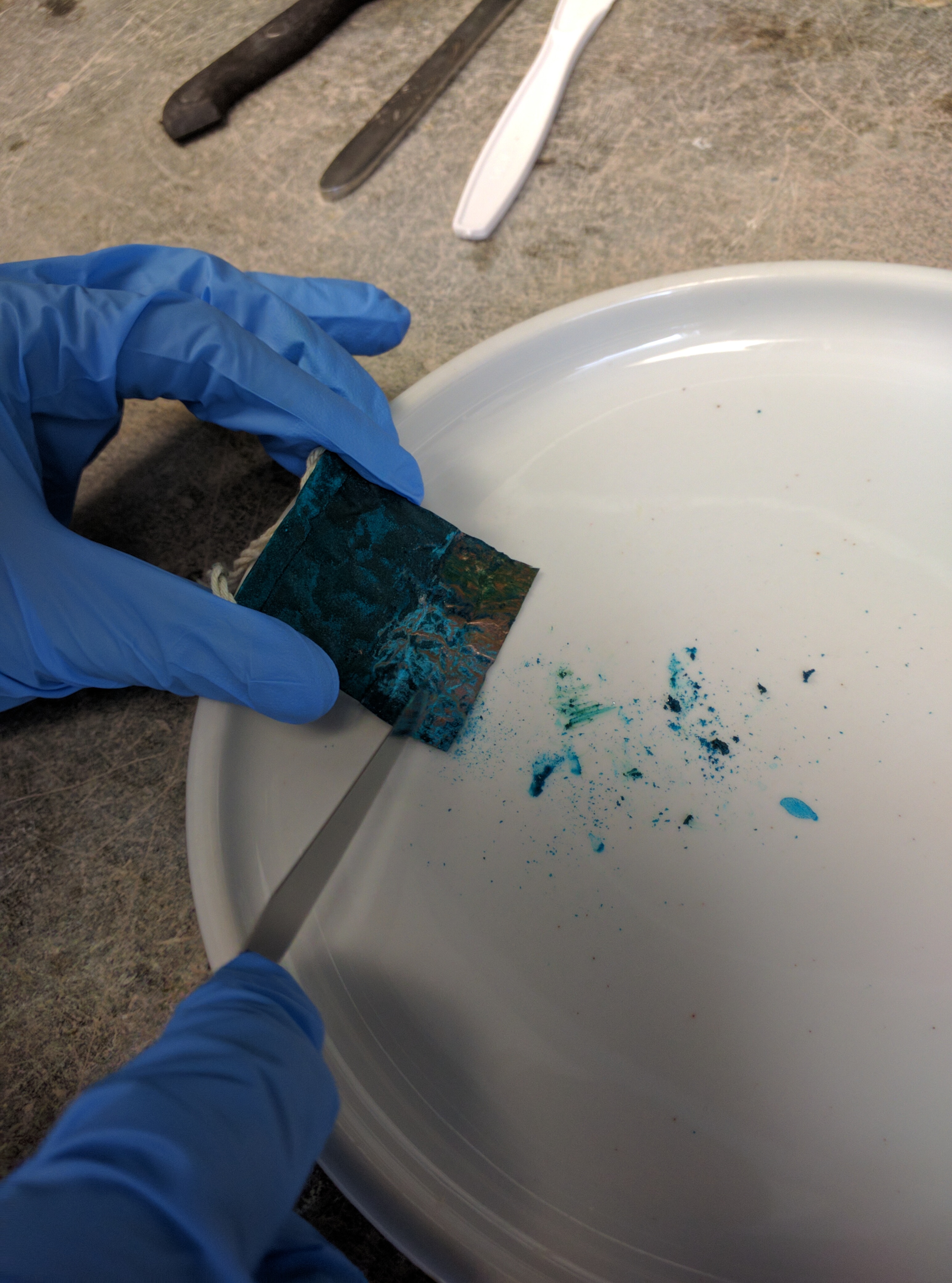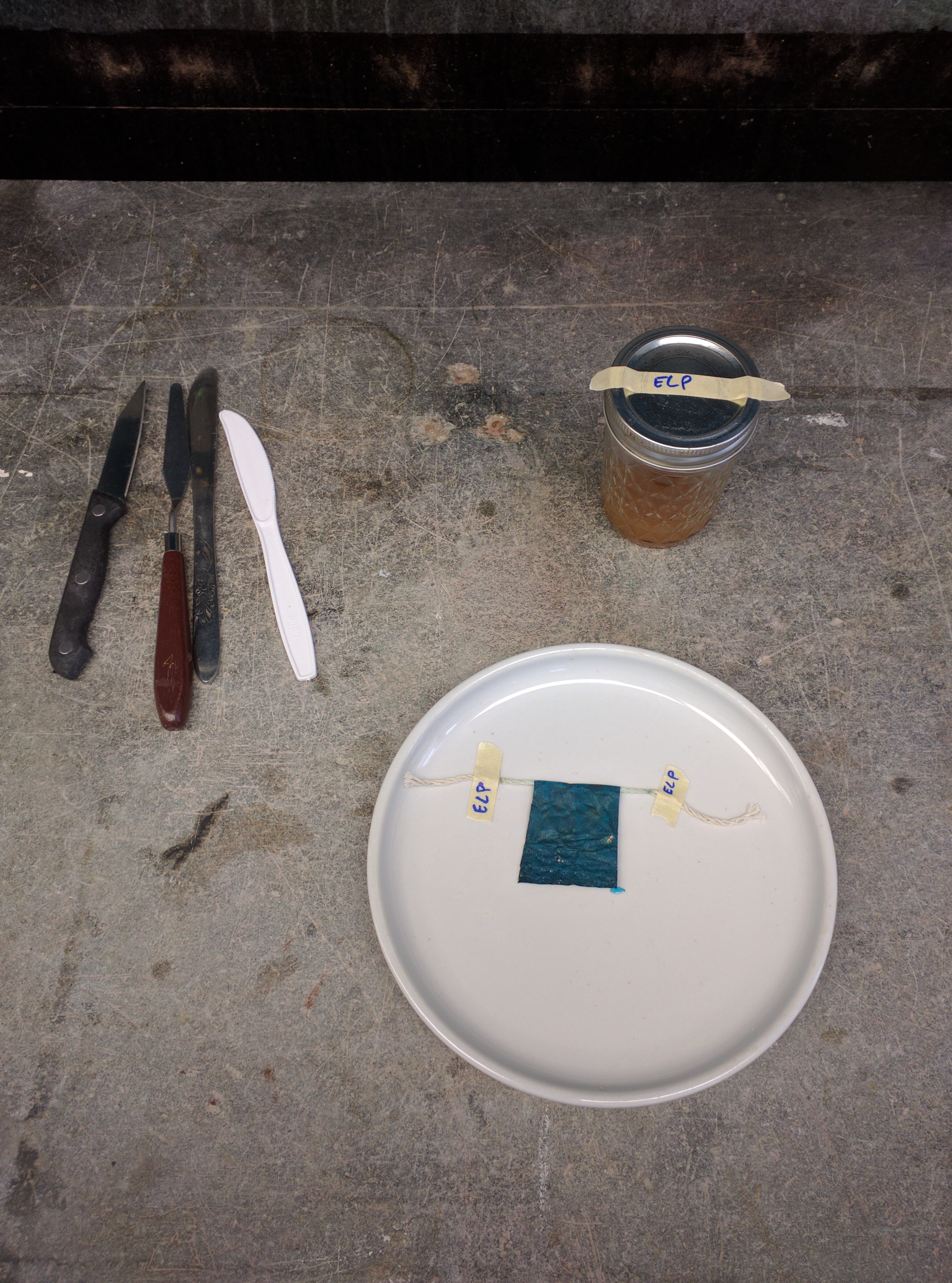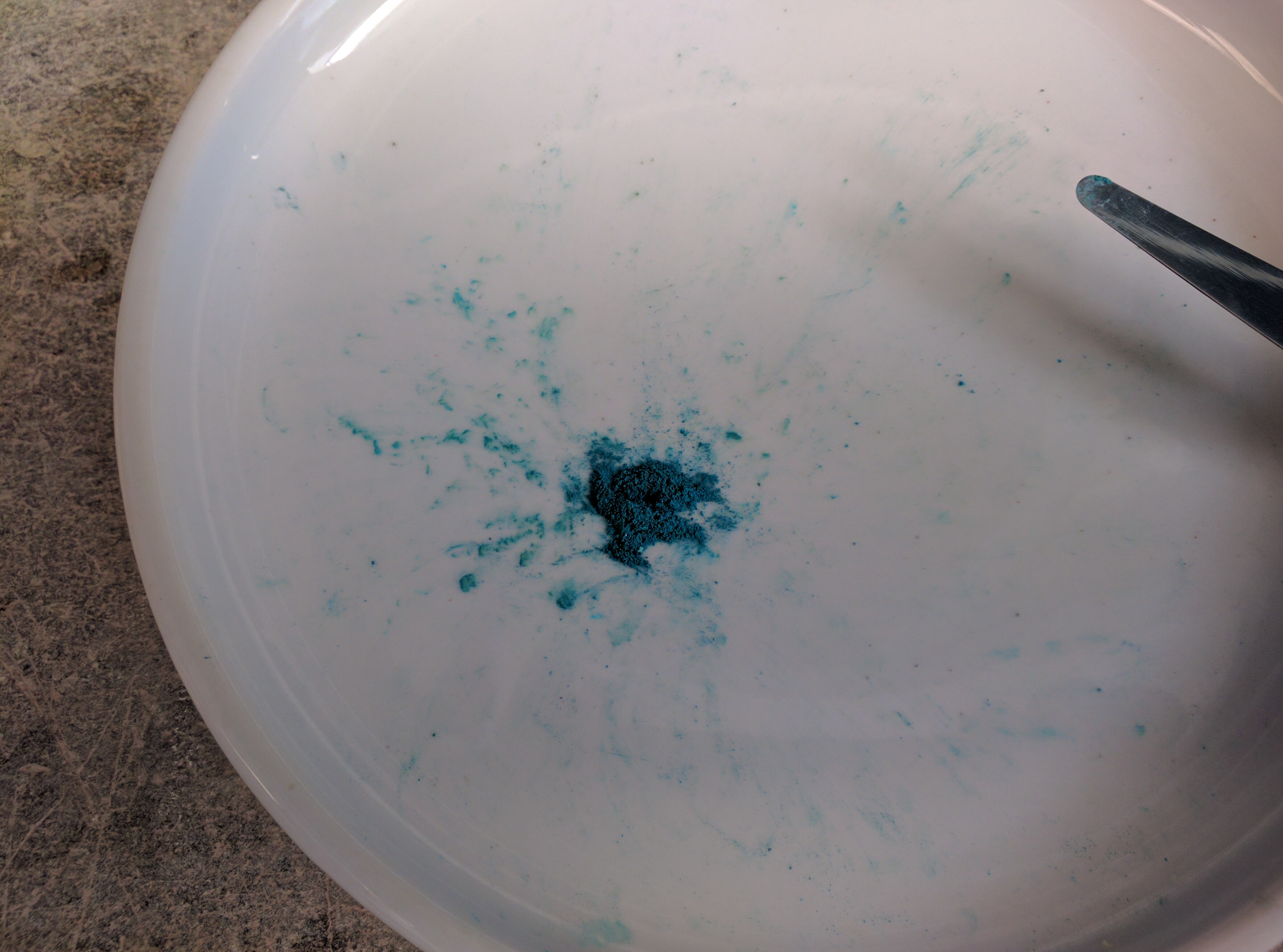Name: Emma Le Pouésard
Date and Time: 10/03/2016 1 pm
Location: Making and Knowing Lab
Subject: Painting out the verdigris
Our first step was to look up the term verdigris (in all its various spellings) in a variety of sources on materials compiled in the Google Drive. We found its instances in the BnF and in other recipes. We discovered the different terms used in different places, such as "verdet" in Spain, a term which appears in our manuscript and may therefore point to an intellectual exchange with Spain. We then proceeded to look it up on ChemWatch to ensure we knew how to handle this material. Based on what we read there, we opted for gloves and a lab coat, but no mask. We did not work in fume hoods.
The first step was to remove the verdigris crystals from the copper sheet. A lot of people used apple cider vinegar, as I did, which created many crystals. A couple students kept their verdigris in the sun as it grew, which resulted in a much lighter, turquoise color. My verdigris was a rich dark green.
To remove it from the copper sheet, I used a palette knife and made small, rapid scratches using the rounded tip. This worked quite well. I did not go in a uniform direction as my copper sheet was crinkled. I therefore had to get to the verdigris from different angles.
Once I had mostly cleaned up my copper sheet, I was left with a small amount of verdigris.
Half the class directly mixed it with linseed and walnut oil, while the other half, myself included, added a couple of drops of vinegar to the pigment, following a recipe we found.
We then placed the verdigris in a fume hood to dry out the vinegar and once again be left with a powder. This took around ten minutes.
We then joined the rest of the class to add the two oils to our pigment. I initially used one small drop of each oil as I had a very small amount of verdigris to work with. Using a muller, I applied force to mix the oil and the pigment.
I then moved to the panel to paint out my two verdigris samples. It is at this point that I found I needed more oil than I had used, as the pigment was sticking to the paintbrush and did not seem fully mixed with the oil. The texture was quite grainy and not very smooth to apply. I therefore added one more drop of linseed and walnut oil to each respective sample. I used the muller again to smoothen the texture.
Because I had so little pigment, I ended up painting a very thin layer on each square. Even with the added oil, I did not get a very smooth texture. The appearance remained quite grainy. I tried to paint the verdigris out unevenly to see how the color appeared in more or less thick layers.
We then left our panels to dry. I am curious to see how the color "dies" over time.




